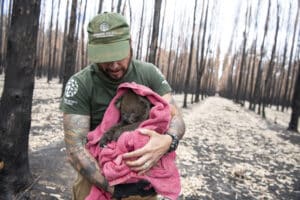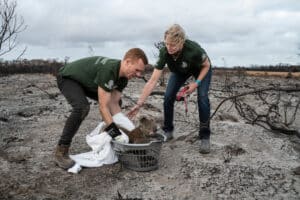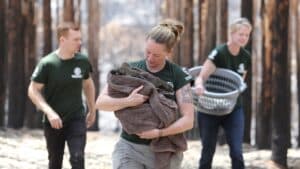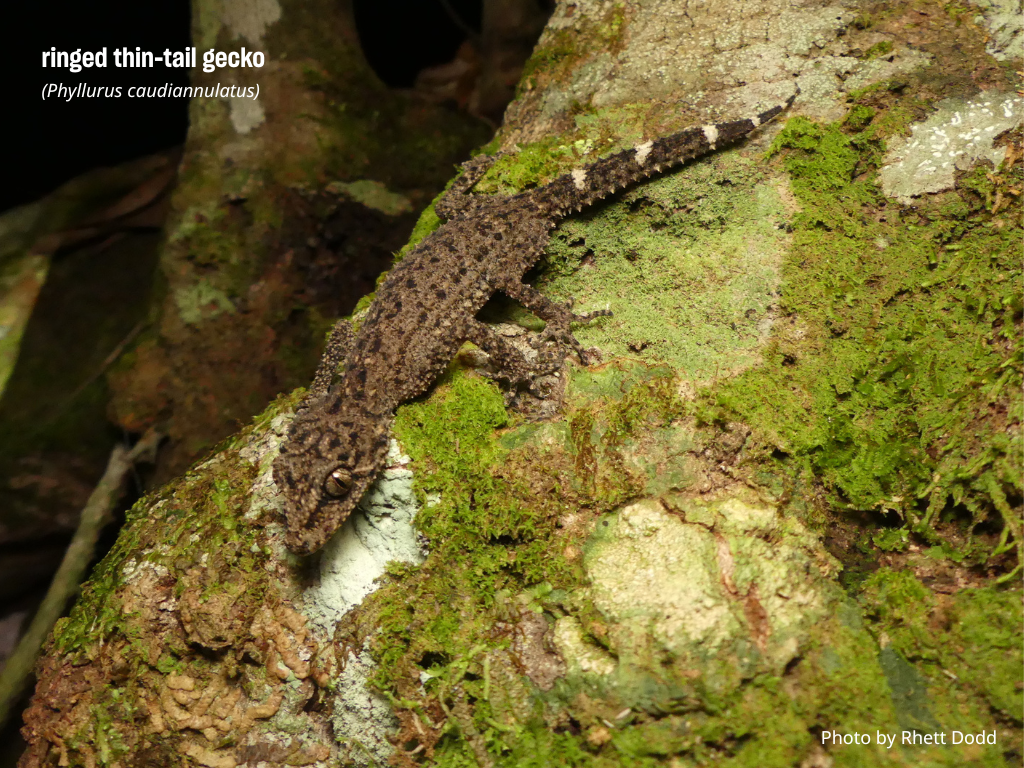CANBERRA (November 27, 2025)—Humane World for Animals says Federal Environment Minister Murray Watt’s reforms to the Environment Protection and Biodiversity Conservation Act, amended in negotiation with the Greens, should give Australian wildlife a “fighting chance” for the future. Humane World for Animals Australia’s Campaign Director, Nicola Beynon, said: “The reformed laws must be a new chapter for our environment and reset the priority that is given to protecting nature in decision making. We...
As Australia braces for the 2024–25 bushfire season, the vivid memories of past disasters, like the 2019–20 Black Summer, remain etched in the hearts of wildlife lovers and carers. The effects of bushfires on wildlife are devastating, leaving countless animals injured, displaced, or dead, and their habitats in ruins.

During a bushfire, many of Australia’s native species struggle to escape the flames. Fast-moving animals may flee the area, but slower animals like koalas often succumb to the fire or suffer severe burns. Birds, unable to find safe roosts, fall prey to smoke inhalation and heat stress, while reptiles and amphibians face habitat destruction and dehydration. Even aquatic life isn’t spared; sediment runoff from burnt areas pollutes waterways, choking fish and amphibians.
The aftermath of emergency events, ever increasing due to climate change, presents a stark and often overlooked challenge. Wildlife is left in landscapes stripped of food, water and shelter, competing for sparse resources in a scorched or flooded environment.
It is estimated that more than three billion animals were affected by the Black Summer Bushfires, pushing some vulnerable populations closer to extinction. Injured animals, suffering from burns or dehydration, face increased predation and infection. Widespread habitat destruction compounds these issues, particularly for species already at risk of extinction.

Recovery is a long and complex process. During Black Summer, wildlife carers and rescue teams worked tirelessly to save lives but were hindered by limited access to firegrounds and a lack of resources.
Humane Society International’s report, Safeguarding Australia’s Wildlife: Lessons from the Black Summer Bushfires, highlighted the key issues that emerged from the disaster, such as delayed permissions to access national parks and insufficient coordination between organisations.
Being disaster-ready is vital to reducing suffering, protecting vulnerable species, and supporting long-term recovery efforts. HSI Australia’s wildlife conservation capabilities extend to disaster response, with skilled, specially trained team members deploying to emergency events. The team is equipped with innovative technologies, such as thermal imaging drones to locate injured or displaced wildlife, and remote camera traps to monitor affected areas. These tools, alongside HSI Australia’s strong collaboration with local wildlife carers and rescue organisations, enable them to act swiftly and effectively.
With rigorous training and preparation, HSI can provide immediate aid to Australian wildlife during disasters—something that may well be needed again soon.

On 28 November, the National Council for fire and emergency services released the Seasonal Bushfire Outlook for Summer 2024. Prolonged dryness and above-average temperatures have heightened fire risks across key regions, particularly in southern Queensland, far west Victoria, the Mornington Peninsula, South Australia’s southeast coast, and parts of Western Australia. These conditions, driven by intense heat and erratic rainfall patterns, underscore the urgency for proactive preparation.
While the outlook for 2024–25 presents a severe challenge, it also offers an opportunity to apply lessons learned and improve our preparedness to safeguard our wildlife. As we brace for another intense season, supporting wildlife organisations and implementing fire-readiness plans at home is crucial.
You can help protect animals in crisis by donating today. Together, we can ensure Australian wildlife has a fighting chance next bushfire season.


